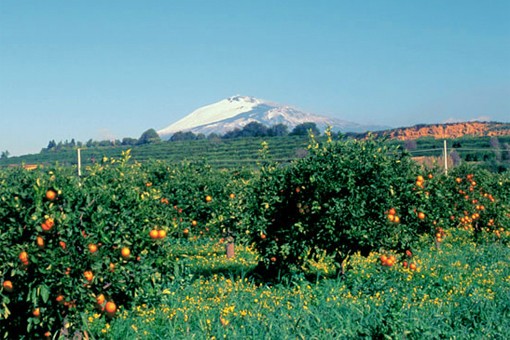 Located at the toe of Italy's foot, the Mediterranean's largest island is a quintessential destination for art hunters, church aficionados, outdoorsy types, deep-sea divers and anyone looking to experience a bit of the old Italy. Stay in a Sicily hotel to experience the sandy shores, ancient villages and orange, lemon and olive groves of this mesmerising island.
Located at the toe of Italy's foot, the Mediterranean's largest island is a quintessential destination for art hunters, church aficionados, outdoorsy types, deep-sea divers and anyone looking to experience a bit of the old Italy. Stay in a Sicily hotel to experience the sandy shores, ancient villages and orange, lemon and olive groves of this mesmerising island.Sicily looks its best on the seaside. The capital Palermo is a bustling coastal hub of Norman architecture melded with baroque churches and medieval Arab quarters juxtaposed with modern cosmopolitan life. East of here on the opposite end of the island stretches a triumvirate of cities: earthquake-ravaged Messina, the chic resort of Taormina and lava-built Catania, right at the foot of a volcano. Just south is Siracusa, at one point the most important city in classical Greece. On the south-western side is Agrigento, whose Hellenic temples have been excellently preserved. Sicily’s fishing industry – and much mafia history – is based in Tràpani on the north-west coast, from where boats sail the waters out to a collection of sleepy islands.
The island has been conquered by powerful civilisations that have all left their mark on its many monuments and buildings. Palermo holds the Cappella Palatina, a chapel of pricsless Byzantine mosaics, carved Arab ceilings and decorative marble floors. Further east is inland the Castello di Caccamo, a turreted Norman castle perched high out on a promontory. The south is dominated by the world’s largest and most varied collection of Roman mosaics at Piazza Armerina’s Villa Romana del Casale, including the famous frolicking and dancing ‘bikini babes’.
Sicily’s landscape offers visitors the opportunity to get to know Mother Nature alla italiana. Petralia Sottana is a tiny, preserved settlement close to the lush Madonie National Park, whose tall conifers and manicured paths make it great for day hikes. Off the northern coast, diving the sea around Ustica offers gin-clear waters and a flourishing marine life. The east coast is home to both Etna and Stromboli, two of Europe’s best-known volcanoes, where occasionally you can see lava shooting out into the sky.
Come summer, Sicily’s beaches are filled with bronzed Italian families staking their territory under yellow umbrellas. Palermo’s resort of Mondello features a 2km stretch of sand that curves its way around to a tiny fishing harbour. Staying in a Sicily hotel on the island’s Tyrrhenian coast lets you spend warm afternoons swimming and relaxing among the cliffs, coves and sandy groves near medieval towns, Cefalù being the largest and most enjoyable. Off the north coast lie the seven Aeolian Islands, whose beaches are pebbly, rocky, sandy and – if you head out to remote Stromboli– volcanic.
Sicily’s cuisine bears the footprints of its past invaders, with distinct Greek, Arab and Spanish flavours. The variety of couscous dishes betray the North African presence, while fish – anchovies, sardines, tuna and swordfish – make obvious appearances at most meals. The island is best known for sweets such as rich cassata ice cream and cannoli. Many of the island’s wines hail from the south; the best are Regaleal, Corvo and the dessert wine Marsala,